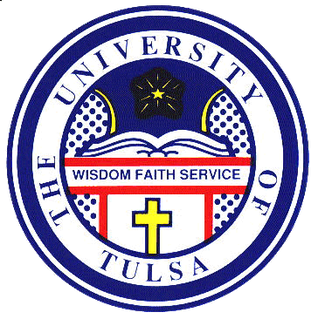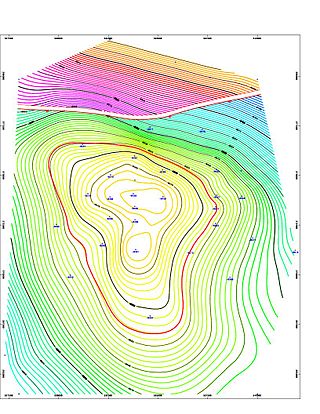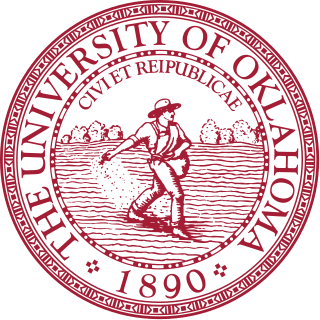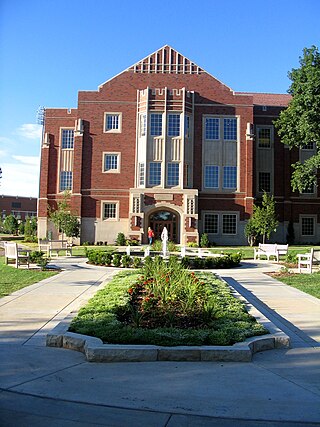
The University of Tulsa (TU) is a private research university in Tulsa, Oklahoma. It has a historic affiliation with the Presbyterian Church and the campus architectural style is predominantly Collegiate Gothic. The school traces its origin to the Presbyterian School for Girls, which was established in 1882 in Muskogee, Oklahoma, then a town in Indian Territory, and which evolved into an institution of higher education named Henry Kendall College by 1894. The college moved to Tulsa, another town in the Creek Nation during 1904, before the state of Oklahoma was created. In 1920, Kendall College was renamed the University of Tulsa.

Petroleum engineering is a field of engineering concerned with the activities related to the production of Hydrocarbons, which can be either crude oil or natural gas. Exploration and production are deemed to fall within the upstream sector of the oil and gas industry. Exploration, by earth scientists, and petroleum engineering are the oil and gas industry's two main subsurface disciplines, which focus on maximizing economic recovery of hydrocarbons from subsurface reservoirs. Petroleum geology and geophysics focus on provision of a static description of the hydrocarbon reservoir rock, while petroleum engineering focuses on estimation of the recoverable volume of this resource using a detailed understanding of the physical behavior of oil, water and gas within porous rock at very high pressure.

The University of Oklahoma (OU) is a public research university in Norman, Oklahoma. Founded in 1890, it had existed in Oklahoma Territory near Indian Territory for 17 years before the two Territories became the state of Oklahoma. In Fall 2022, the university had 29,705 students enrolled, most at its main campus in Norman. Employing nearly 3,000 faculty members, the school offers 152 baccalaureate programs, 160 master's programs, 75 doctorate programs, and 20 majors at the first professional level.

The Colorado School of Mines, informally called Mines, is a public research university in Golden, Colorado, founded in 1874. The school offers both undergraduate and graduate degrees in engineering, science, and mathematics, with a focus on energy and the environment. While Mines does offer minor degrees in the humanities, arts, and social sciences, it only offers major degrees in STEM fields, with the exception of economics. In the Fall 2022 semester, the school had 7,408 students enrolled, with 5,733 in an undergraduate program and 1,675 in a graduate program. The school has been co-educational since its founding, however, enrollment remains predominantly male. In every QS World University Ranking from 2016 to 2022, the university was ranked as the top institution in the world for mineral and mining engineering. It is classified among "R1: Doctoral Universities – Very high research activity".
The American Association of Petroleum Geologists (AAPG) is one of the world's largest professional geological societies with more than 40,000 members across 129 countries as of 2021. The AAPG works to "advance the science of geology, especially as it relates to petroleum, natural gas, other subsurface fluids, and mineral resources; to promote the technology of exploring for, finding, and producing these materials in an economically and environmentally sound manner; and to advance the professional well-being of its members." The AAPG was founded in 1917 and is headquartered in Tulsa, Oklahoma; currently almost one-third of its members live outside the United States.

The Michael F. Price College of Business at the University of Oklahoma is a business school in the United States. It was established in 1917 and currently has 5,500 students. The OU Price College of Business undergraduate program currently ranks No. 64 nationally and the top-ranked business school in Oklahoma by U.S. News And World Report.

The University of Oklahoma College of Engineering in the engineering unit of the University of Oklahoma in Norman. It has an enrollment of 2,086 undergraduates and 2,193 graduate students,. In 2009, 257 bachelor's degrees, 92 master's degrees and 29 doctoral degrees were conferred.

The Gaylord College of Journalism and Mass Communication is the journalism unit of the University of Oklahoma in Norman. The College is named for the former longtime publishers of The Oklahoman.
The Jeannine Rainbolt College of Education is the education unit of the University of Oklahoma in Norman. As of fall 2005, the school had an enrollment of 639 undergraduates and 777 graduates. The building is also called Collings Hall.
The Jackson School of Geosciences at The University of Texas at Austin unites the Department of Geological Sciences with two research units, the Institute for Geophysics and the Bureau of Economic Geology.

The Yale School of Engineering & Applied Science is the engineering school of Yale University. When the first professor of civil engineering was hired in 1852, a Yale School of Engineering was established within the Yale Scientific School, and in 1932 the engineering faculty organized as a separate, constituent school of the university. The school currently offers undergraduate and graduate classes and degrees in electrical engineering, chemical engineering, computer science, applied physics, environmental engineering, biomedical engineering, and mechanical engineering and materials science.
The College of Earth and Mineral Sciences is a constituent, semi-autonomous part of Penn State University, University Park, Pennsylvania.

David Deming, an American geologist and geophysicist, is an associate professor of Arts and Sciences at the University of Oklahoma in Norman. He graduated from North Central High School in Indianapolis, Indiana in 1972. He then attended Indiana University Bloomington, graduating in 1983 with a BS degree in geology, and received a Ph.D in geophysics from the University of Utah in 1988. Prior to his arrival at the University of Oklahoma in 1992, Deming held a National Research Council postdoctoral fellowship at the U.S. Geological Survey in California. From 1992 through 2003, Deming was an assistant and associate professor in the School of Geology and Geophysics at the University of Oklahoma. An outspoken and controversial professor, Deming was involved in two major disputes with the OU administration, one leading to a lawsuit. Deming is the author of more than thirty research papers and the textbook Introduction to Hydrogeology. He is an associate editor for the academic journals Petroleum Geoscience and Ground Water, and is an adjunct faculty member at two conservative think tanks, the Oklahoma Council of Public Affairs and the National Center for Policy Analysis
Sarkeys Energy Center is the largest and tallest building on the campus of the University of Oklahoma (OU), Norman, Oklahoma, United States. It houses several academic units mainly centered on the Earth sciences.
The Stanford School of Earth, Energy & Environmental Sciences, which changed its name from the School of Earth Sciences in February 2015, is one of three schools at Stanford awarding both graduate and undergraduate degrees. Stanford's first faculty member was a professor of geology; as such it is considered the oldest academic foundation of Stanford University. It is composed of four departments and two interdisciplinary programs. Research and teaching span a wide range of disciplines. On May 4, 2022, Stanford announced that the School of Earth would stop operating on September 1, 2022, upon which it would become part of the newly established School of Sustainability.
The academics of the University of Southern California center on The College of Letters, Arts, and Sciences, the Graduate School, and its 17 professional schools.

John Clarence Karcher was an American geophysicist and businessman. He invented and eventually commercialized the reflection seismograph, applying for patents in 1919. By the patenting, and development of reflection seismography, he created the means by which most of the world's oil reserves have been discovered. In 1930 he, Eugene McDermott, and Everette Lee DeGolyer founded Geophysical Service Incorporated, a pioneering provider of seismic exploration services to the petroleum industry that focused on reflection seismology.
Charles C. Stephenson Jr. is a petroleum industry executive and philanthropist. He was born in Antlers, Oklahoma, the son of a successful grocer. He lives in Tulsa, Oklahoma.
The Australian School of Petroleumand Energy Resources (ASPER) is a centre for education, training and research in petroleum and energy resources engineering, geoscience and management at the University of Adelaide in South Australia. ASPER is housed in the purpose-built Santos Petroleum Engineering Building on the University of Adelaide's North Terrace campus.

The Oklahoma Geological Survey is a state agency chartered in the Constitution of Oklahoma responsible for collecting and disseminating information about Oklahoma's natural resources, geological formations, and earthquakes. Shortly after Oklahoma became a state, its first legislature passed an enabling act on May 29, 1908 and Governor Charles Haskell signed it into law. The OGS was an offshoot of Oklahoma Territory's Territorial Survey, which was established in 1900. OGS remains the only state geological survey that was created by a provision in the state constitution. In 1924, jurisdiction of the OGS was officially put under the Oklahoma University Board of Regents, and has not been changed since. In 2007, OGS became part of the Mewbourne College of Earth and Energy.